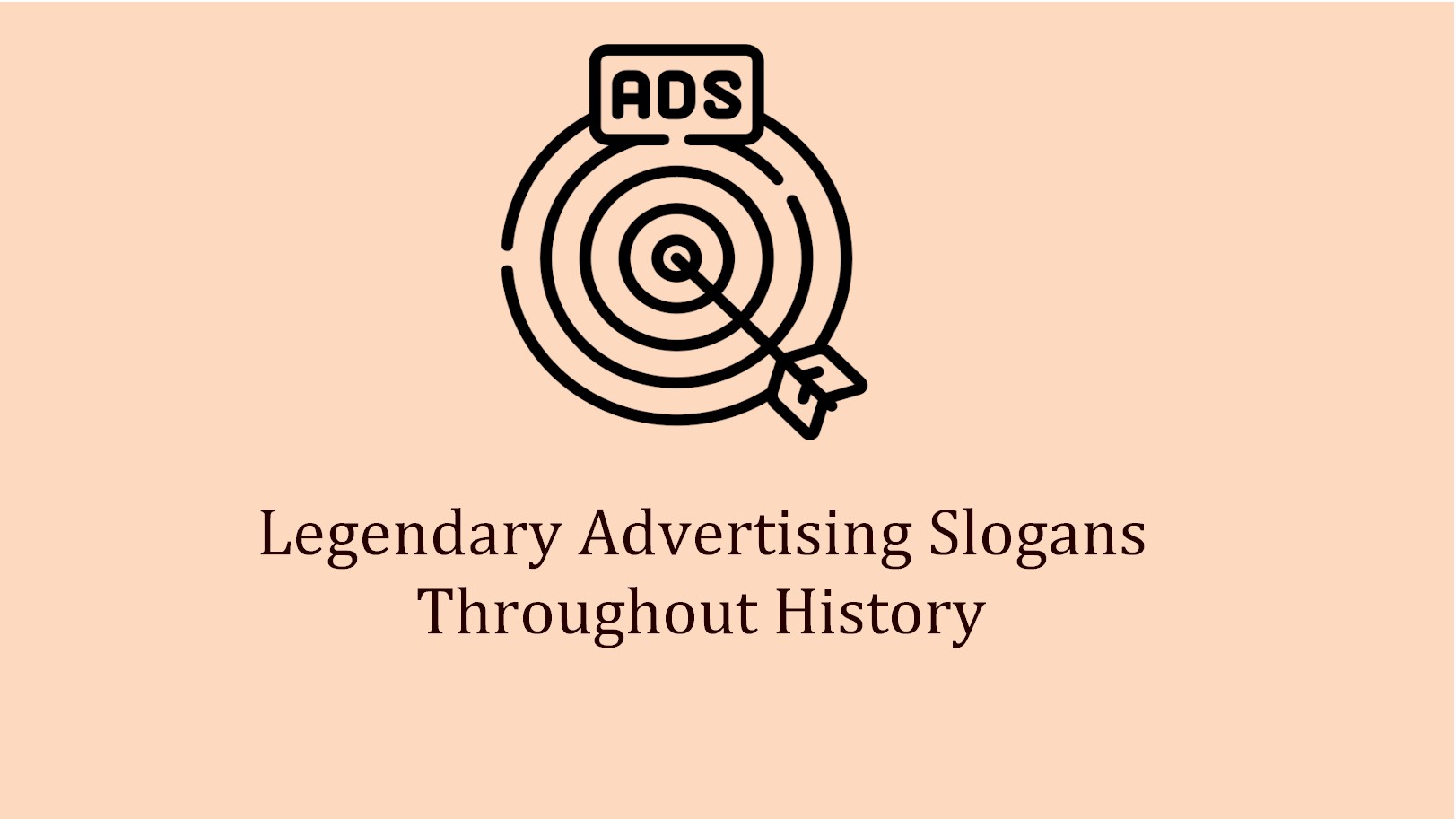There have been some legendary advertising slogans throughout history, so to whittle them down to a mere thirteen is an impossible task. I have selected some of those that I find the most memorable to share with you:-
01. Nike – “Just Do It”
Nike’s immediately-recognisable slogan was conceived by Dan Wieden, co-founder of a little-known Portland agency called Wieden & Kennedy. The source of Wieden’s inspiration for the slogan was implausible – murderer Gary Gilmore’s final words before his execution, “Let’s do it”. It was in 1988, eleven years after Gilmore’s statement, that Wieden’s slight modification created the simple tagline that would change the fortunes of a brand forever.
In 1988, Nike’s international sales were at $800 million. By 1998, a mere 10 years later, sales exceeded $9.2 billion.
With the slogan, Nike encouraged everybody to forget about the impressions of others and, regardless of physical physique, age or gender, to “just do it”. This led to Nike merchandise being seen as generally-fashionable and not only as sports-related. The ad campaign, and slogan in particular, drastically changed the perception of the brand and, along with it, its fortunes.
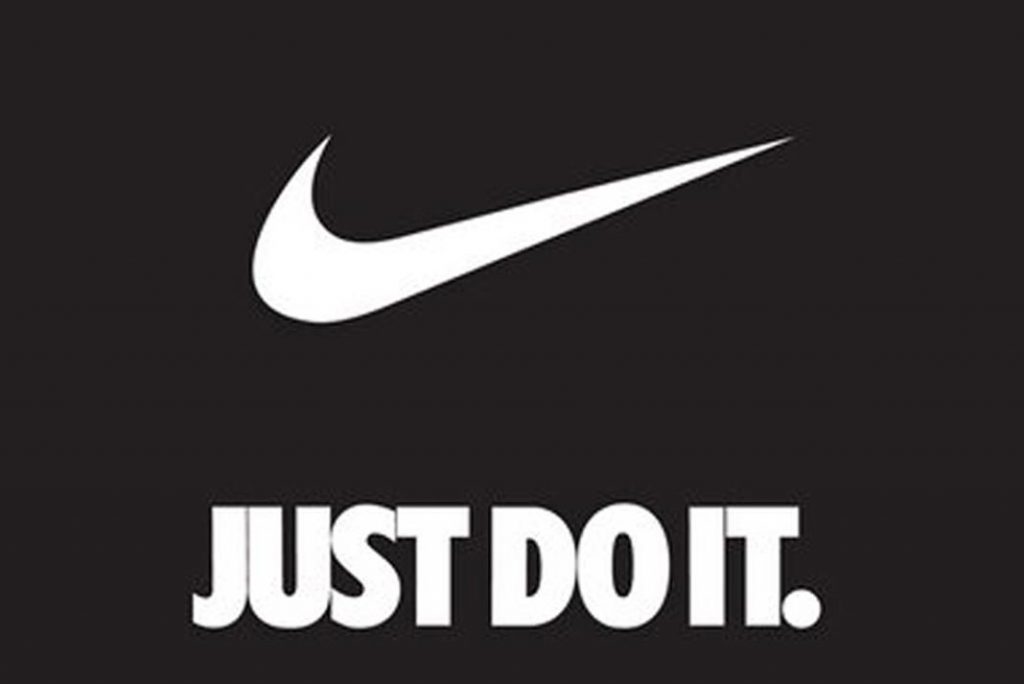
02. Coca-Cola – “Share a Coke”
Coca-Cola’s “Share a Coke” ad campaign initiated in Australia in 2011. The concept was devised by the Sydney branch of Ogilvy & Mather, with the “Share a Coke” slogan continuing Coca-Cola’s established brand image of togetherness and camaraderie. The idea to couple the slogan with individual names on Coke bottles in the brand’s font was nothing short of ingenious. 150 popular Australian names were selected, with the result being that consumers, especially the youth (one of the company’s historical target audiences), searched through fridges, or waited with anticipation at vending machines, to see if their names would appear. The slogan further encouraged consumers to “share a coke” if they located the names of friends or family.
The successful Australian campaign led to it being incorporated in the US, and it quickly became a worldwide phenomenon, with the number of names available in stores increasing to 1000 in 2015. You are even able to order custom-printed bottles with nicknames from Coca-Cola’s website.
The “Share a Coke” campaign resulted in a whole new generation of Coke drinkers, to add to their already-huge consumer base. The slogan remains instantly recognisable as a symbol of Coca-Cola’s image of freedom, warmth and community.
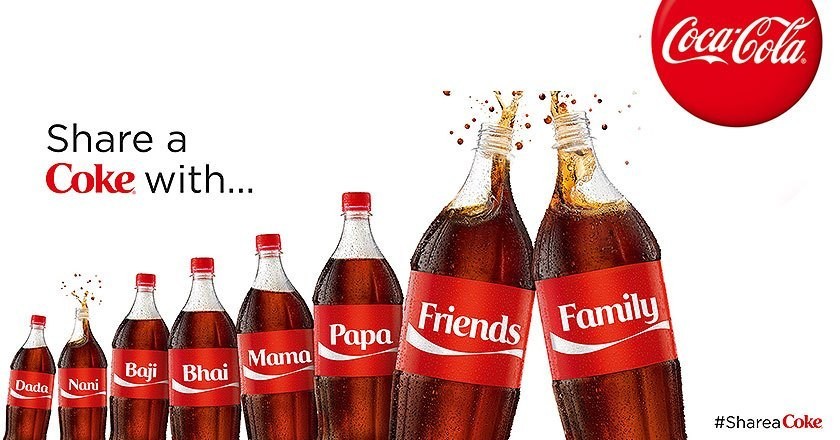
03. Volkswagen – “Think Small”
It was Doyle Dane Bernbach’s client, Volkswagen advertising manager, Helmut Schmitz, that identified the “Think Small” slogan from DDB’s copywriter Julian Koenig’s copy and insisted that it would be adopted. The year was 1959 and DDB’s art director, Helmut Krone, was not happy with this development. An intervention by his boss, Bill Bernbach, persuaded him to design some layouts and the adopted result was a small image of the Volkswagen Beetle in the top left corner of the page and some promotional text at the bottom, headed with the slogan “Think Small”. The rest is advertising history.
The entire advert ended up being printed in black and white as Volkswagen didn’t have enough money to print it in colour. What resulted was a simplistic, sincere advert that completely contrasted with the colourfully lavish ads appearing in Life Magazine, where it first appeared. “Think Small” appealed to people’s intellect, in vast contradiction to historical campaigns which focused on flair and elegance. The public lapped up the change and Volkswagen sales soared.
Future Volkswagen ads showed that the vehicle’s appearance didn’t change, rather stressing its quality and reliability. The “Think Small” campaign marked a distinct switch in advertising thereafter, with advertisers choosing to no longer depreciate the intelligence of their audiences and, instead, producing more honest and realistic copy. It is not surprising that many regard “Think Small” as one of the top advertising slogans of the 20th century.
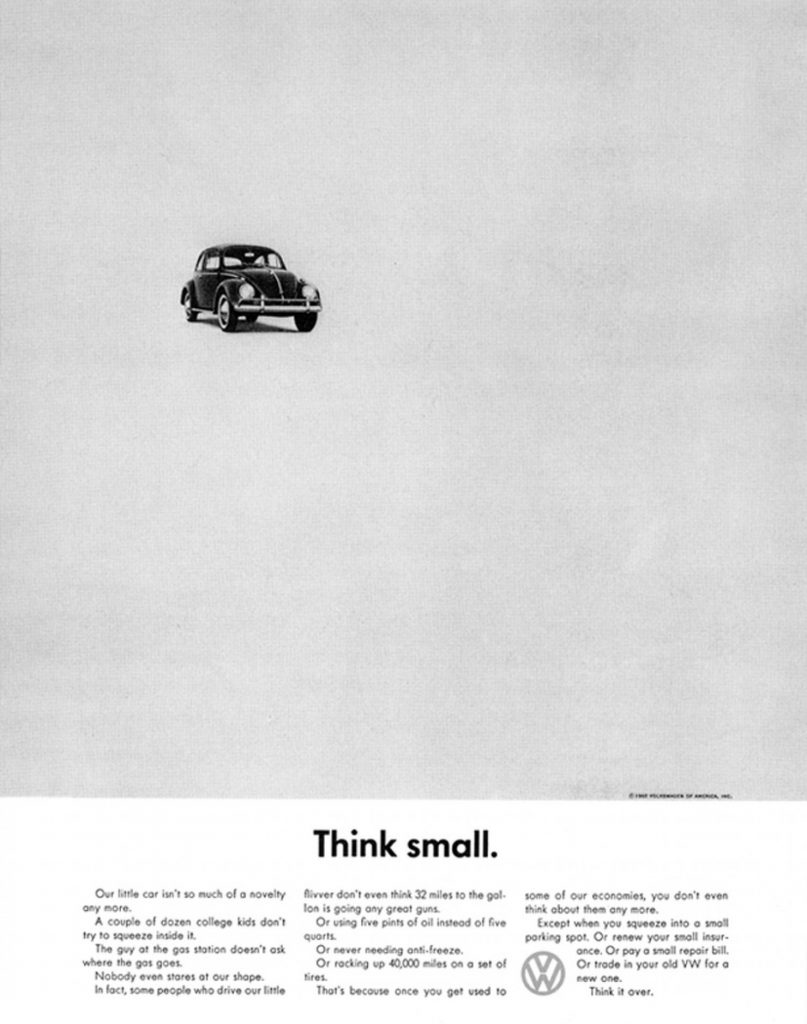
04. Clairol – “Does She… or Doesn’t She?”
Clairol wanted to relay the belief that their product was so good that people would be unsure whether a woman’s hair had been coloured or not, and to change the 1950’s stigma attached to using hair-enhancement products. It was left up to Shirley Polykoff of Foote, Cone & Belding to come up with a way of doing it.
Polykoff, a long-time user of hair products herself, realised that the only way to change public perceptions was to make sure that women would be entirely comfortable that the hair products they were using left their hair looking natural. She recalled how, many years before, her future mother-in-law had asked her then-boyfriend whether she “paints” her hair. For years afterwards Polykoff and her husband, on noticing women with appealing hair, joked between each other… “Does she or doesn’t she?”. Hence, the powerful and iconic slogan “Does she… or doesn’t she?” was born. Although her bosses at FCB were initially reluctant to use the slogan, viewing it as potentially sexually-suggestive, Polykoff’s choice of models for use in the copy swayed them. Life Magazine were more hesitant though, refusing to publish the ad until being convinced by a poll of their female employees.
Within six years of original printing, hair colour sales had skyrocketed and over half of the US female population were colouring their hair. Sales had climbed from $25 million to $200 million a year, and Clairol was earning close-to-half of that. “Does she… or doesn’t she?” asked the question that thousands had been asking, and the answer, thanks to a still-recognisable slogan, was soon most likely affirmative.
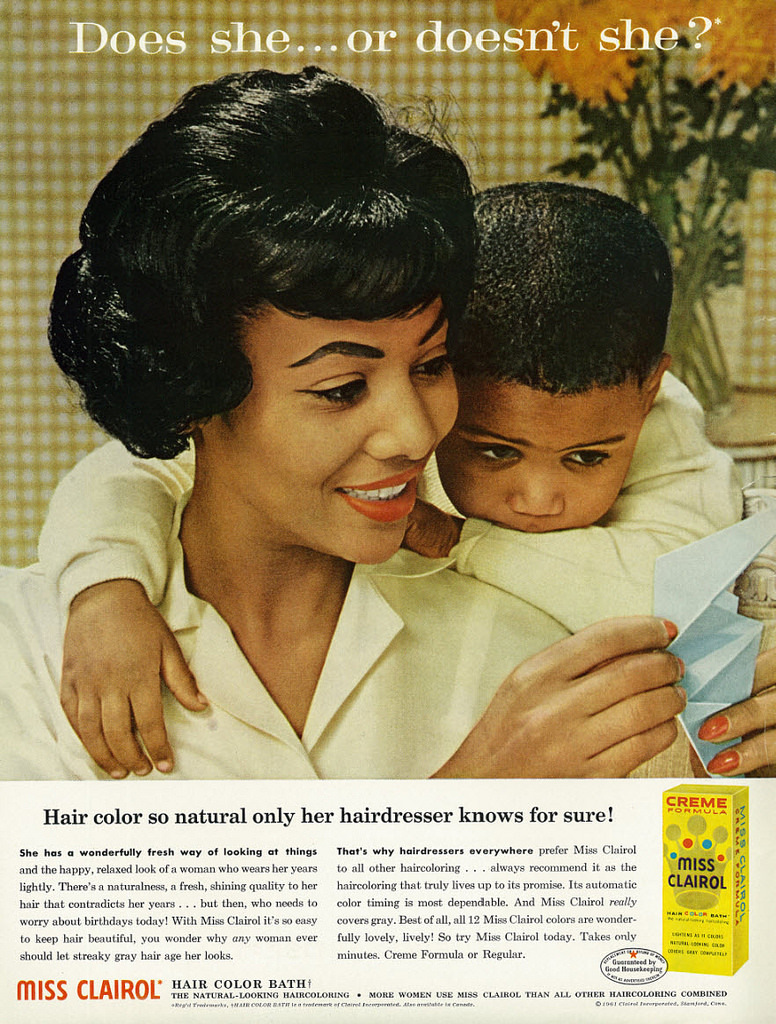
05. California Milk Processor Board – “Got Milk?”
A 1993 focus group was headed by Jon Steel, a partner at Goodby, Silverstein & Partners, to research milk consumption habits. Brainstorming of the results, which indicated how much milk was a part of everyday life, allowed the advertising firm to pitch the campaign slogan “Got Milk?” to their client, the California Milk Processor Board.
The CMPB had long been looking for ways to boost milk sales and were concerned that milk had become publicly regarded as a mundane, staple item that was losing sales due to the rise in cooldrink consumption. GSP’s novel “deprivation marketing” approach was to target existing consumers of milk, and not those who weren’t drinking it, by asking them what their lives would be without it.
By focusing solely on existing milk consumers, the campaign improved milk sales by 7% within a year. The “Got Milk?” campaign has utilised numerous celebrities since, and has resulted in numerous “Got?” parodies of other products being produced.
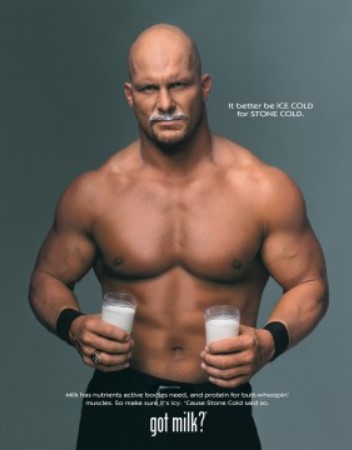
06. De Beers – “A Diamond is Forever”
De Beers Group is an international corporation that specialises in diamond mining, diamond exploitation, diamond retail, diamond trading and industrial diamond manufacturing sectors. Its 1947 ad campaign, which birthed the slogan “A Diamond is Forever”, has been credited with being responsible for growing the global diamond ring category in the jewellery sector to what it is today.
“A Diamond is Forever” was coined by Frances Gerety, a copywriter at the NW Ayer agency. The point of the slogan and campaign was to change the public’s perception of diamonds to one synonymous with love and commitment. This campaign achieved its goal with diamond sales in the US increasing from $23 million to $2.1 billion in the following 3 decades. De Beers’ advertising budget increased from $200,000 to $10 million a year during this time.
In 1999, Ad Age named De Beers’ “A Diamond is Forever” as the advertising slogan of the 20th century, a testimony to how it transformed the industry and improved the value of, what had been, a relatively inexpensive commodity to its current status as one of the World’s most desired and sought-after gems.
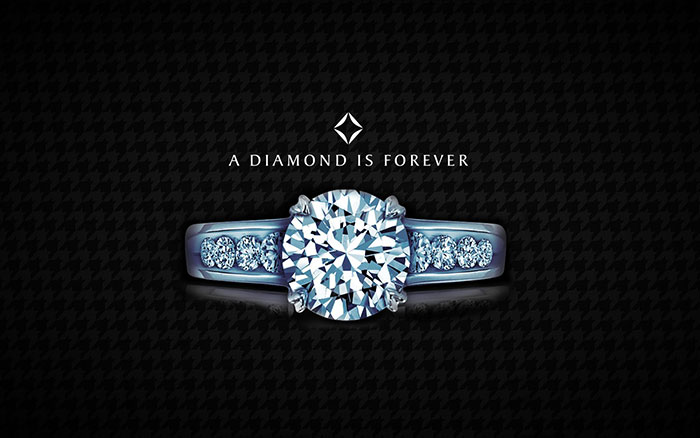
07. Audi – “Vorsprung durch Technik”
The BBH Ad Agency made a bold move in 1982, when they created a UK ad campaign for their client, Audi, using an old German slogan previously used for marketing the car in its homeland. BBH creative director, John Hegarty, had found “Vorsprung durch Technik” on an old faded poster on a factory wall while visiting his client in Ingolstadt. The slogan had been used by Audi since 1971 but it was only Hegarty’s foresight that brought it worldwide acclaim.
Hegarty recognised that German cars were synonymous with efficiency, precision and excellence in engineering, and prior research into Audi had found that the brand was viewed by foreigners as more of an indistinct ‘euro-car’ than a German one. BBH needed to change this perception. Audi’s own official translation of “Vorsprung durch Technik” is “Advancement Through Technology” while the English slogan used in the US is “Truth in Engineering”. BBH‘s research did not support the use of the German slogan in the UK but, thanks to the insistence of Audi clients Brian Bowler and John Meszaros, the campaign went ahead as Hegarty had originally proposed.
The slogan was immediately successful in the UK. Dealerships were lavish in their praise, commenting on how often customers came in requesting some of that ‘vorsprung.’ German tennis star, Boris Becker, was competing at Wimbledon at the time, and commentators were prone to throwing in the campaign words ‘technik’ and ‘vorsprung’ during their commentary of his matches, which certainly didn’t harm the Audi campaign. Perhaps the most important part of using the slogan was that it cemented Audi as German, and afforded the brand the chance to compete on a more level playing field with rival German brands, BMW and Mercedes. “Vorsprung durch Technik” is a slogan indelibly linked with Audi all over the World today, thanks to the innovation of John Hegarty and BBH.
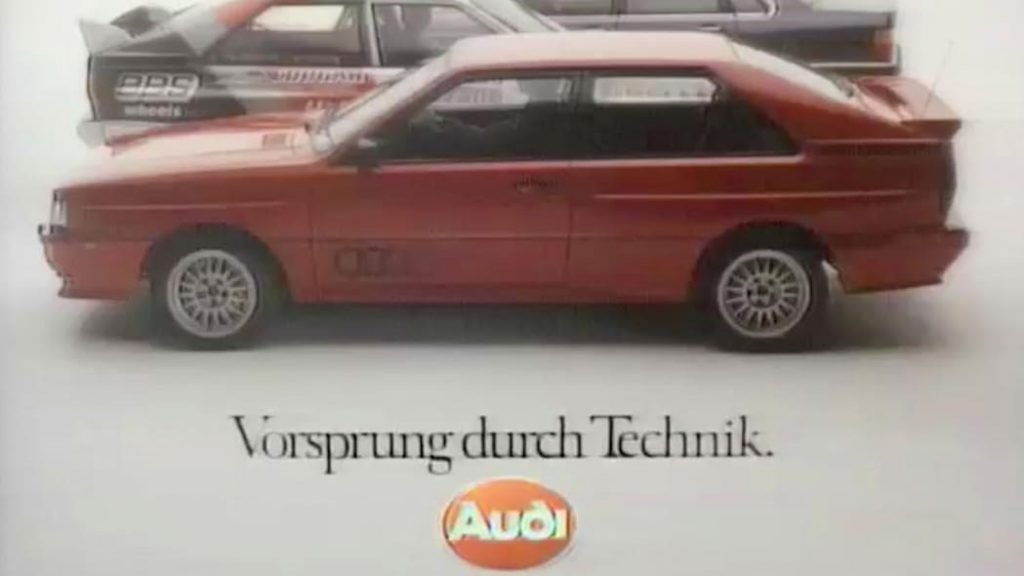
08. KFC – “It’s Finger Lickin’ Good”
In 1935, growing fried chicken brand KFC’s founder, Harland Sanders, was bestowed with the title of ‘Colonel’ by the Kentucky governor, Ruby Luffoon, as recognition for his culinary service to the state. Colonel Sanders, the now world-famous figurehead of KFC, had arrived. It wasn’t until the early 1950s that the slogan “It’s Finger Lickin’ Good” completed what was to become a recognisable worldwide brand.
Sanders had, by this point, franchised his concept when one of his franchisees, Dave Harman from Phoenix, licked his fingers in the background of a TV commercial. Harman’s actions inadvertently prompted the line that would become instantly recognisable for decades to come. His ‘finger lickin’’ resulted in an angry complaint from a woman viewer about his actions, which evoked the response “Well, it’s finger lickin’ good” from his restaurant manager, Ken Harbough. With that impromptu comment, history was made. Almost immediately thereafter, Harbough’s words were adopted, along with an illustrated bust of the Colonel himself, in branding for KFC. This iconic phrase and image have been synonymous with the brand ever since. Until Covid-19 reared it’s ugly head.
During 2020 KFC decided to abandon the “It’s Finger Lickin’ Good” slogan, albeit temporarily, due to potentially relaying an ill-advised message contradicting health advice during the Coronavirus pandemic. New KFC marketing shows the ‘finger lickin’’ portion of the famous slogan blanked out on billboards and packaging – a necessary adjustment considering the current health recommendation that people don’t touch their faces but, let’s face it, we all know what the blanked out words are, don’t we? KFC’s successful slogan has endured for almost seven decades and, covered over or not, its impact will remain.
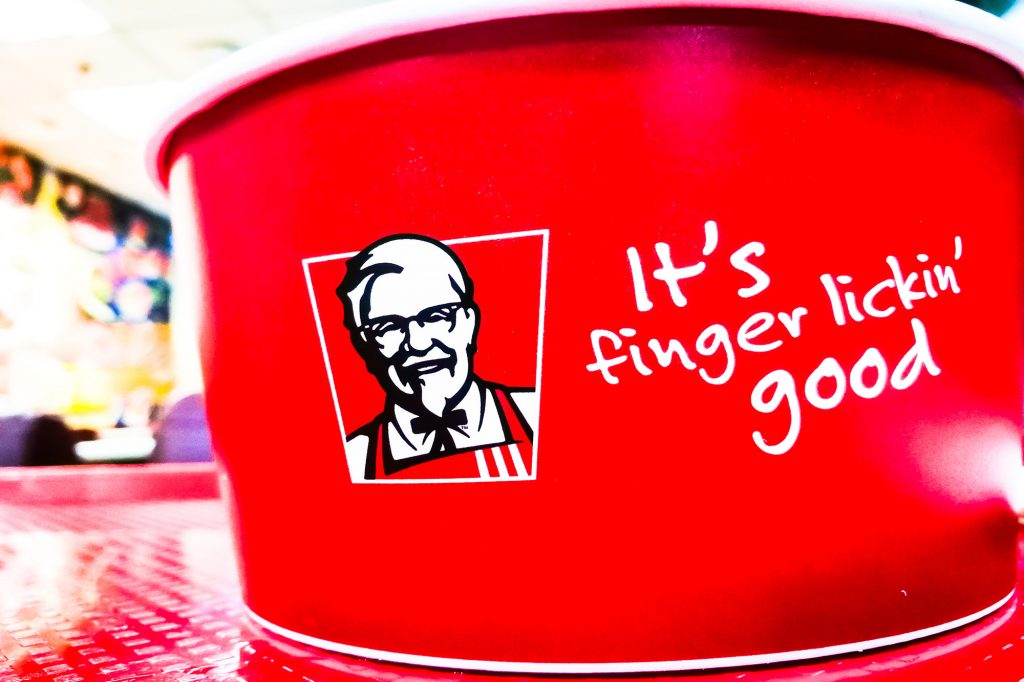
09. Absolut – “Absolut Perfection”
In 1980, the TBWA ad agency created an advert for Swedish vodka brand Absolut. Below a picture of a simple bottle with a halo above it appeared the words “Absolut Perfection”. This was the first US ad for the product and the slogan became the forerunner of an ongoing campaign that worked ‘absolut’ wonders for the brand and its vodka sales worldwide.
Over the next two-and-a-half decades Absolut adopted a number of different versions of the initial “Absolut Perfection” slogan in its campaigns. Replacing ‘perfection’ with other words continued the theme of the campaign and prolonged its effectiveness. Variations included “Absolut Original”, “Absolut Security” and “Absolut Balance” among countless others. Due to the versatility afforded by the original “Absolut Perfection” slogan, TBWA had created an original, ongoing concept that would serve the Swedish company effectively for longer than any liquor ad campaign had previously.
The idea behind “Absolut Perfection” created a campaign that resulted in 1,500 different adverts over a period of 25 years. All featuring the same vodka bottle. During this period Absolut’s US annual sales grew from 10,000 cases in 1980 to 4.5 million cases by the end of the millennium. Advertising-wise, the company’s budget grew by an incredible $32.25 million over the same period. It’s amazing what a simple bottle and a few words can do.
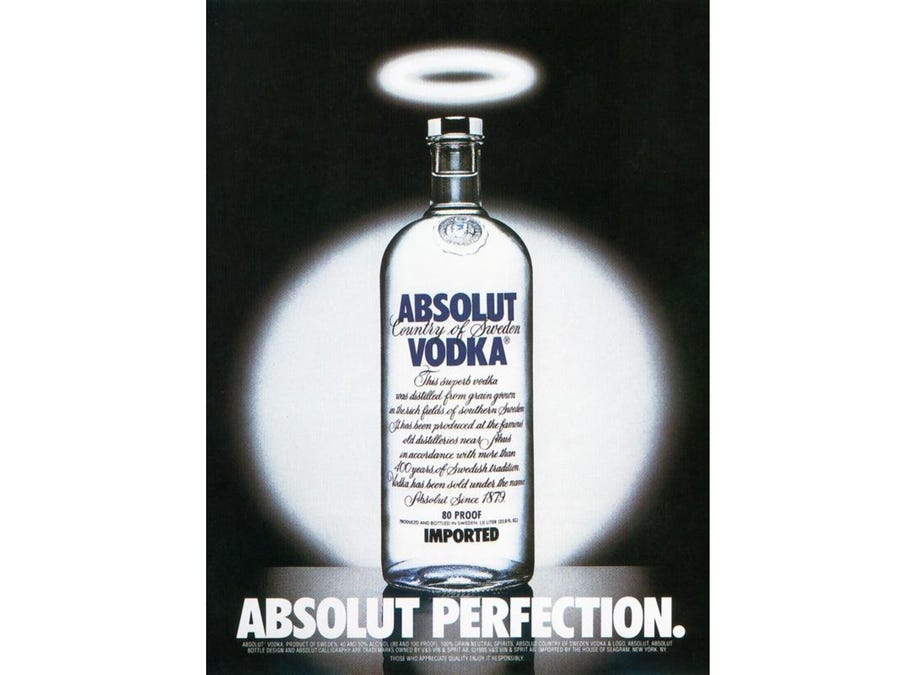
10. Apple – “Think Different”
Steve Jobs returned to Apple in 1996 with a goal in mind. He had to turn the waning company around and the only way he was going to do this was to think differently. He went about creating an ad campaign that revolved around this, coming up with a slogan that, although not grammatically correct, encapsulated his goal and appealed to the masses, especially his younger audience. “Think Different” was that slogan.
With Apple‘s new range of products to bolster his quest, and using the “Think Different” slogan together with a number of well-known and iconic personalities, Jobs and his contractually-silenced ad agency, TBWAChiatDay, began reviving the flagging brand’s fortunes. A predominantly print-based campaign, coupled with a ‘mood video’ set to Seal’s hit song “Crazy” and featuring actor Richard Dreyfuss‘ dialogue, resulted in exactly what Apple needed. The brand went from strength to strength and “Think Different” became one of the most talked-about campaigns of the 1990s.
Jobs had personally gained permission from Yoko Ono to use an iconic photo of her and John Lennon in an advert, and set about incorporating numerous other high profile names and historical figures into ads as well. Some of the names involved were Albert Einstein, Gandhi, Nelson Mandela, Martin Luther King Jr, Bob Dylan, Jim Henson (of The Muppets fame), the Dalai Lama and Jobs himself. The “Think Different” slogan, coupled with the instantly-recognisable names and faces involved, began a new era that would transform Apple into a brand synonymous with individuality and change.

11. Kit Kat – “Have a break, have a Kit Kat”
In 1949, Rowntree’s Kit Kat was developed from its original form, Chocolate Crisp. Designed following a suggestion that the company develop a chocolate that would fit well in a packed lunch, the ad agency JWT devised the new product name and, in 1957, executive Donald Gilles came up with the slogan “Have a break, have a Kit Kat”.
Taking into account Kit Kat’s four finger snappable form, and that one or two of the fingers of the chocolate bar would be convenient to snap off and eat during a quick pause at work, Gilles set about building this perception with an ad campaign. First launched in print during 1958, the product soon became recognisable on TV where its quirky suggestion met with the public’s approval. Kit Kat soon became synonymous with appreciating those precious few minutes breaktime during a busy working day.
In 1988, Nestlé absorbed Rowntree’s as a company and made some immediate changes. One thing that wasn’t changed was Kit Kat, and neither was its successful slogan. The “Have a break, have a Kit Kat” campaign ran for 47 years in total before being shelved but, even then, it wasn’t long before it was reinstated. Over a billion Kit Kats are now sold worldwide annually, with the catchphrase still going strong.
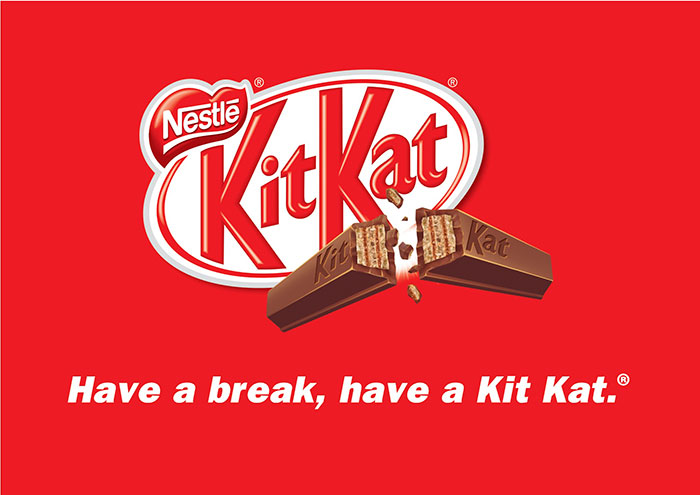
12. Red Bull – “Red Bull gives you wings…”
Red Bull was developed from scratch in Austria in 1985, and quickly became a huge seller worldwide. Starting with the design of the can and culminating with an instantly-recognisable slogan and ad campaign, the energy drink is renowned as the best selling drink of its type internationally.
The “Red Bull gives you wings…” slogan fitted in perfectly with what the brand was all about. The premise was that each can gives consumers more energy due to including more caffeine therein than in a cup of coffee and that this, in effect, would give you the energy boost to ‘fly’ through the day’s tasks and compete better intellectually and athletically. Using some quirky cartoon characters and witty dialogue in its TV ads, the “Red Bull gives you wings…” slogan benefited the brand incredibly for over two decades, to the degree that it is now available and selling in over 170 markets across the globe.
In the mid-2000s the brand hit a snag. Benjamin Careathers, a consumer, began a class action suit against Red Bull for ‘false advertising’. He stated that, after 10 years of drinking the product, he neither had wings nor was he enhanced in either an athletic or intellectual way. According to court documents, Red Bull agreed to a settlement of approximately $13 million and to alter their slogan. As a result, Red Bull now gives you “Wiiings” and not “Wings”.
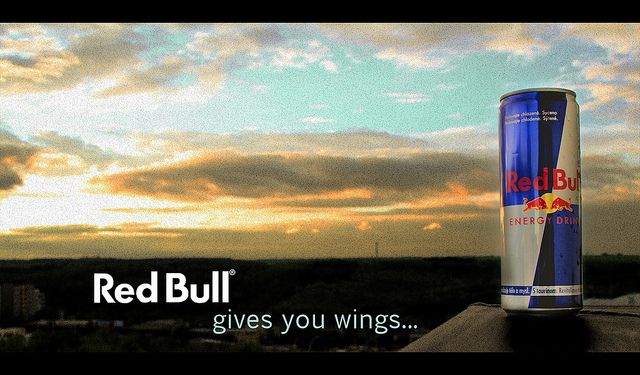
13. Rice Krispies – “Snap! Crackle! Pop!”
Kellogg’s Rice Krispies made its first appearance in 1928, complete with the audible crackling sound made when milk is added to the cereal. In 1933, NW Ayer, the ad agency for Kellogg’s, came up with an ad campaign to utilise this original sound to help with selling the product. Introducing a radio jingle featuring the words “Snap! Crackle! Pop!”, the ad had instant appeal and product sales began to rise.
Soon afterwards, NW Ayer incorporated an illustrated gnome, complete with baker’s hat and spoon, into their print advertising. They called him ‘Snap’, with his name visible on his hat. ‘Snap’ was soon joined in print by two other similar characters named ‘Crackle’ and ‘Pop’. By the end of the 1930s all three characters appeared, not only in print ads, but on the packaging of all Rice Krispies cereals. Around 1950, the trio received a makeover, changing from the gnomes they were into the more-recognisable elvish characters we see today. Their names and the slogan remained though, and still do today, almost 90 years on from their first appearances.
Unfortunately there is no record of who actually wrote the original jingle “Snap! Crackle! Pop!” and hence devised the well-known slogan. Whoever it was should be recognised for assisting in the creation of an enduring, successful brand that has delighted kids for close to nine decades, and probably more to come. “Snap! Crackle! Pop!” is audibly, visually and textually a fit for its brand.
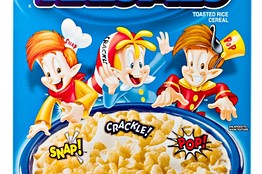
Slogans are all about being creative with what you’ve been given. A good slogan might be realised because of an impromptu event, or from an old poster on a factory wall, or by remembering something that happened to you many years previously, or by thinking small or different(ly). There’s no telling where inspiration may come from and you cannot always predict how the slogan you come up with may turn out. If it turns out anywhere nearly as successfully as any of the above 13 legendary advertising slogans throughout history, you’re on the right track.
For any assistance you may need with your slogans, check out ContentBot‘s AI Slogan Generator here.
Images courtesy of iStock unless otherwise specified
- Technology and the future of books - July 29, 2021
- The benefits and importance of UX writing - July 29, 2021
- Use the science of music as a tool to enhance creative productivity - July 28, 2021
